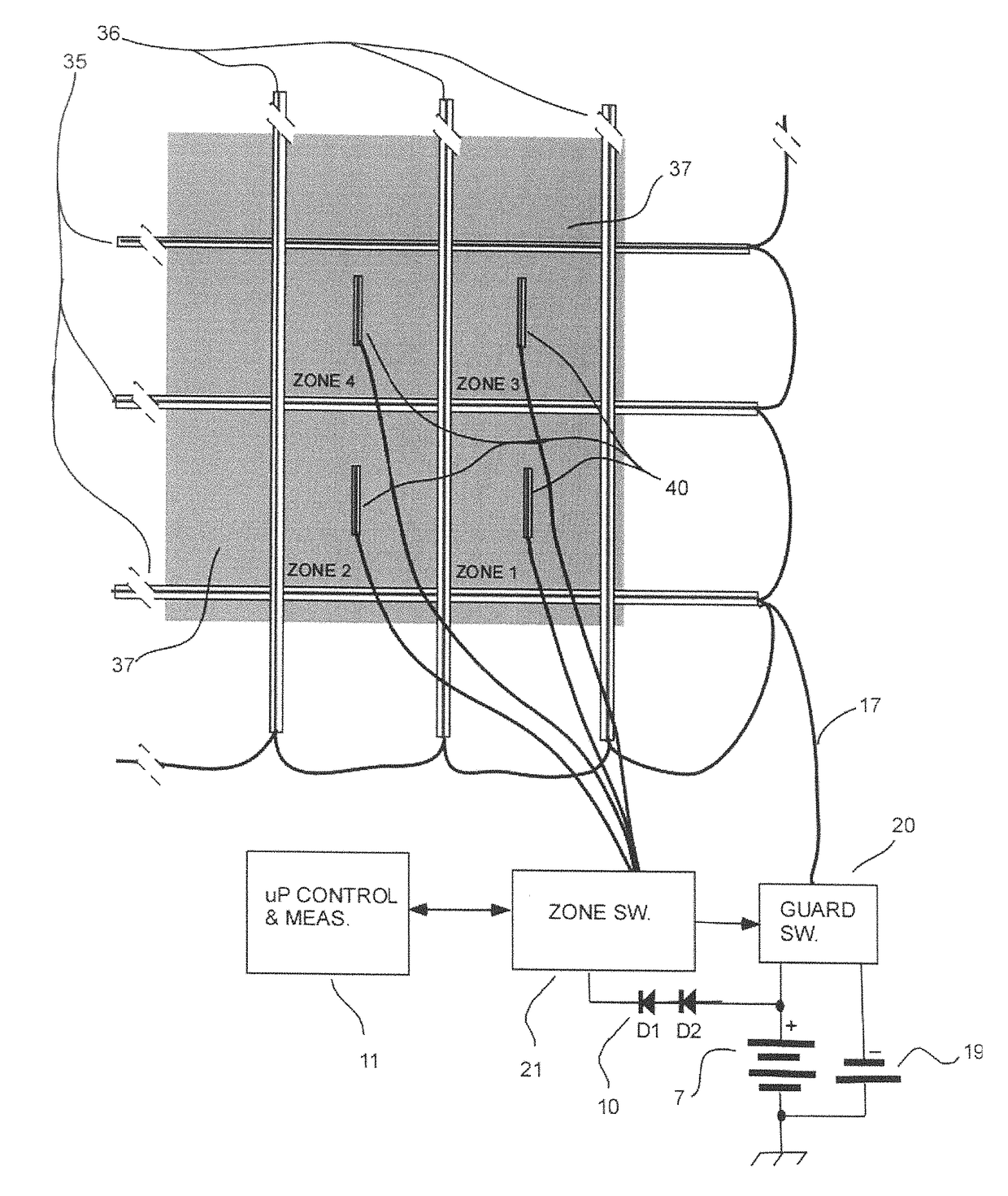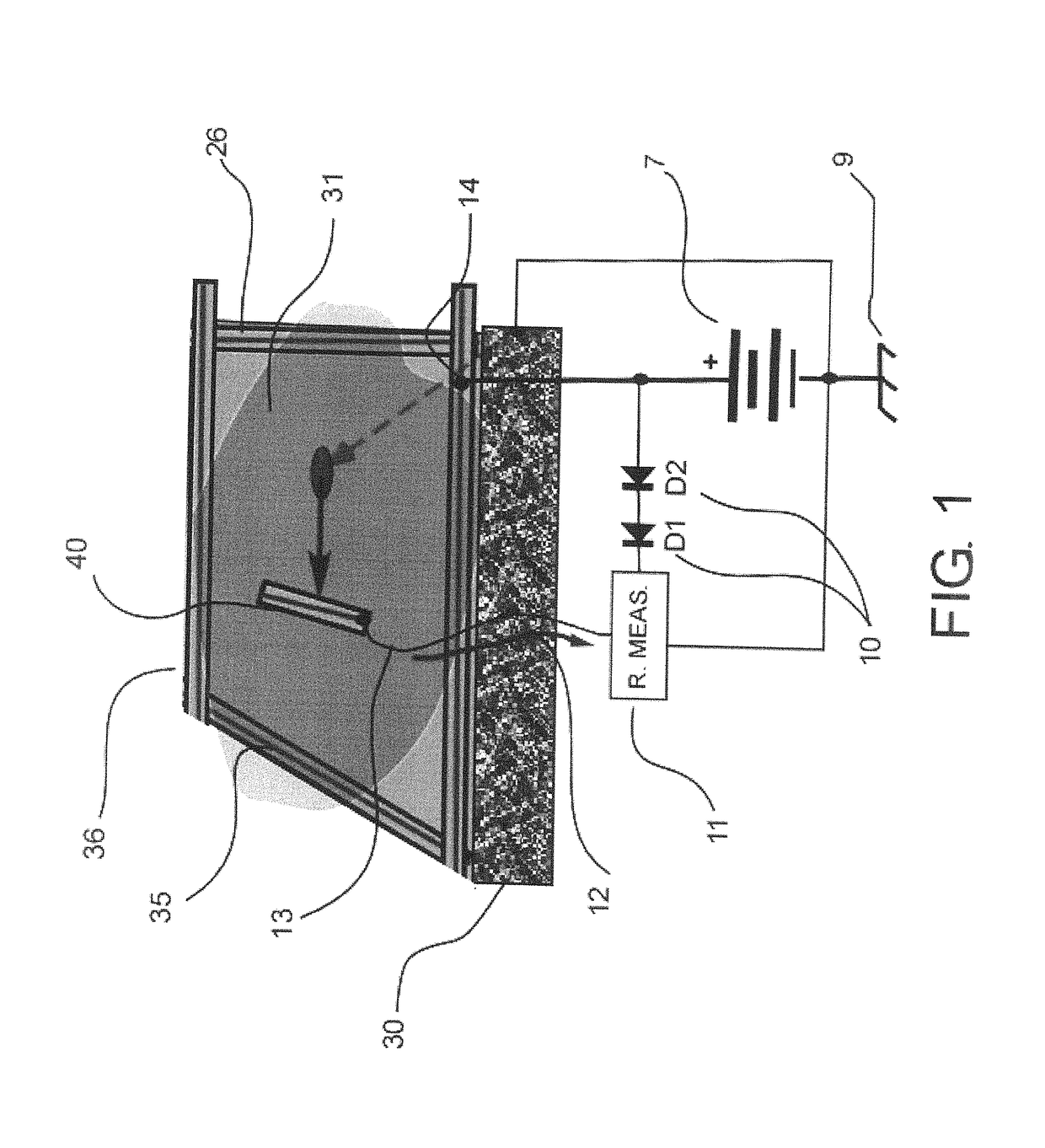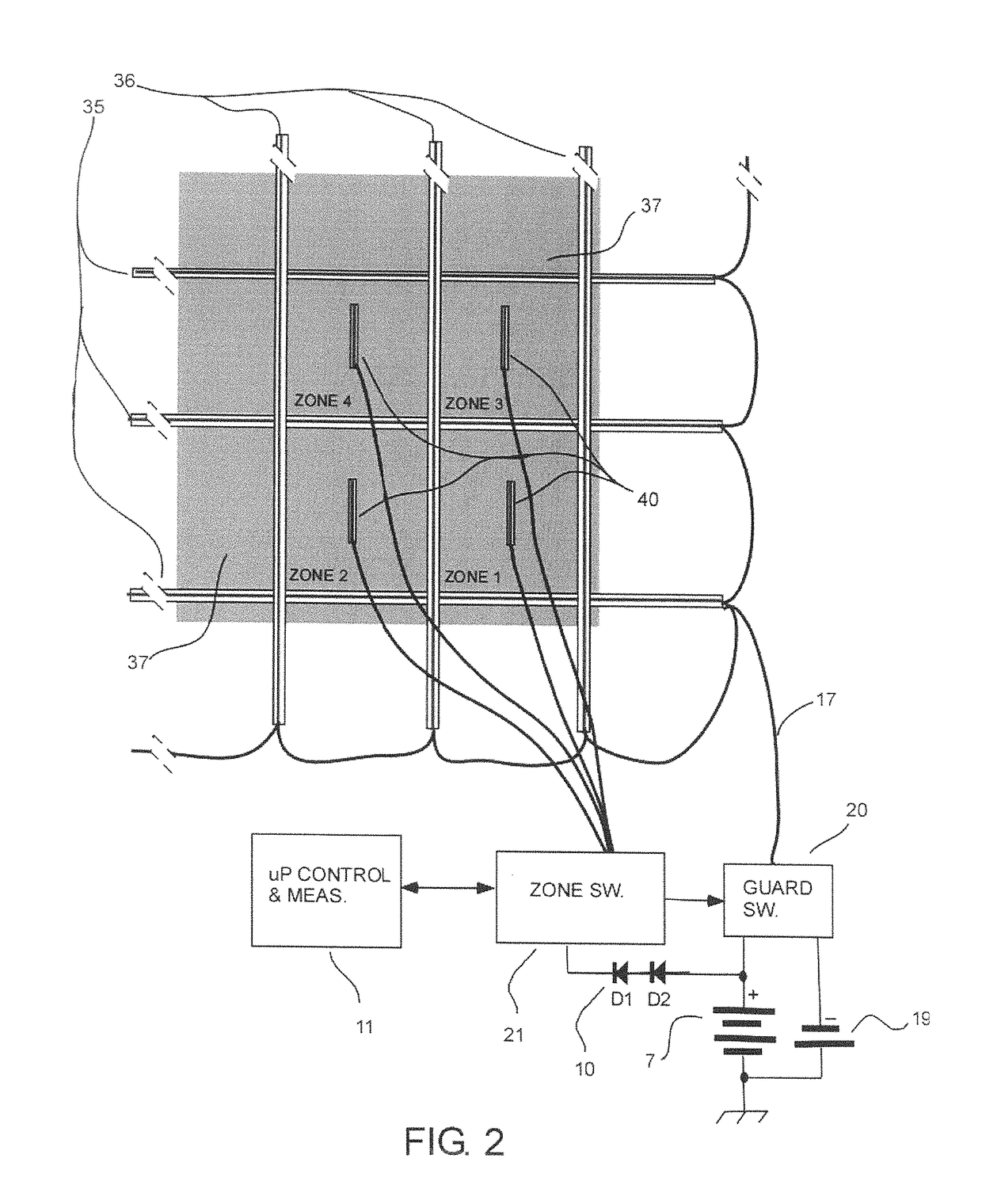Leak detection in roof membranes
a leak detection and roof membrane technology, applied in the direction of fluid leakage detection, fluid tightness measurement, instruments, etc., can solve the problems of premature roof failure, inability to detect, find and correct, and costly roofing problems, so as to reduce the voltage of the measurement circuit, inhibit corrosion and electrolysis, and enhance the operation of the guard conductor
- Summary
- Abstract
- Description
- Claims
- Application Information
AI Technical Summary
Benefits of technology
Problems solved by technology
Method used
Image
Examples
Embodiment Construction
[0050]Referring now to the drawings, the overall arrangement of the subject roof membrane moisture detection system can best be seen with reference to FIGS. 1 and 2. A roof membrane 31 is illustrated which is applied as a direct covering layer over a roof deck 30. The deck is typically of concrete but can be of any suitable material that is sufficiently conductive to allow the detection of a low level electrical current travelling through the deck to a measurement ground. The membrane is a water impervious material such as thermoplastics and is sealed at any joints to provide a continuous water barrier over the roof deck. This barrier is intended to provide the leak prevention and any penetration therein caused by a puncture or faulty seal or by wear can allow the moisture to penetrate to the deck where it can cause damage or can continue into the structure to cause damage to internal structures. The membrane is typically covered by a drainage layer 2, thermal insulation 3 and a sur...
PUM
| Property | Measurement | Unit |
|---|---|---|
| electrically conductive | aaaaa | aaaaa |
| electrical potential | aaaaa | aaaaa |
| current | aaaaa | aaaaa |
Abstract
Description
Claims
Application Information
 Login to View More
Login to View More - R&D
- Intellectual Property
- Life Sciences
- Materials
- Tech Scout
- Unparalleled Data Quality
- Higher Quality Content
- 60% Fewer Hallucinations
Browse by: Latest US Patents, China's latest patents, Technical Efficacy Thesaurus, Application Domain, Technology Topic, Popular Technical Reports.
© 2025 PatSnap. All rights reserved.Legal|Privacy policy|Modern Slavery Act Transparency Statement|Sitemap|About US| Contact US: help@patsnap.com



